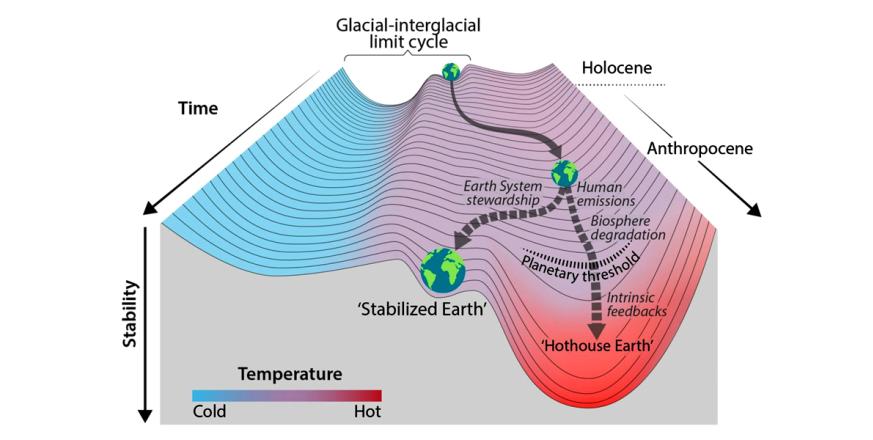International Group of Scientists Explore Potential for “Hothouse Earth” in the Anthropocene

Tony Barnosky is a coauthor on a study published last week in the Proceedings of the National Academy of Sciences that examines how Earth’s climate may stabilize given different scenarios of greenhouse gas emissions. The study, which was reported widely in the media throughout the world, considers ten natural processes which can result in “tipping points” that would markedly influence the future of the planet, whether or not the targets of the Paris Agreement to limit global temperature rise to 2 degrees Celsius are met. If these tipping points are set into motion, they would act as a row of dominoes, each toppling the next, that would result in what the scientists dubbed “Hothouse Earth,” where global temperatures stabilized at some 4-5 degrees Celsius hotter than today, which would make some areas of the planet uninhabitable and markedly influence human societies in many negative ways. The study concludes that avoiding this scenario is possible but will require planetary stewardship that focuses on accelerating the transition to a world economy that does not depend on fossil fuels, and cooperation among nations to encourage relevant behavioral changes and technological innovations. A press release with additional information is available here. The article abstract is available here.
The illustration above is Figure 2 in the publication, and is explained in the caption as "the stability landscape showing the pathway of the Earth System out of the Holocene and thus, out of the glacial–interglacial limit cycle to its present position in the hotter Anthropocene. [There is] a fork in the road, shown here as the two divergent pathways of the Earth System in the future (broken arrows). Currently, the Earth System is on a Hothouse Earth pathway driven by human emissions of greenhouse gases and biosphere degradation toward a planetary threshold at ∼2 °C, beyond which the system follows an essentially irreversible pathway driven by intrinsic biogeophysical feedbacks. The other pathway leads to Stabilized Earth, a pathway of Earth System stewardship guided by human-created feedbacks to a quasistable, human-maintained basin of attraction. “Stability” (vertical axis) is defined here as the inverse of the potential energy of the system. Systems in a highly stable state (deep valley) have low potential energy, and considerable energy is required to move them out of this stable state. Systems in an unstable state (top of a hill) have high potential energy, and they require only a little additional energy to push them off the hill and down toward a valley of lower potential energy."



